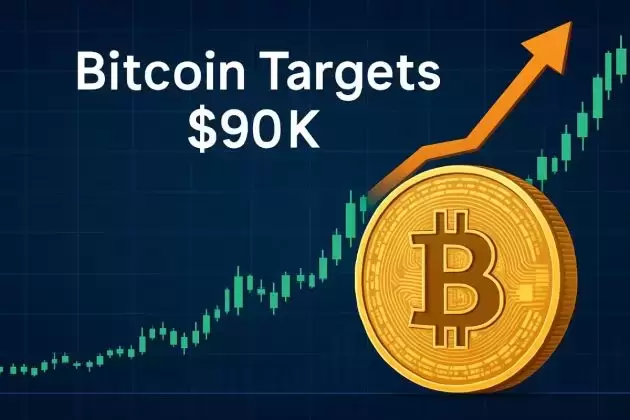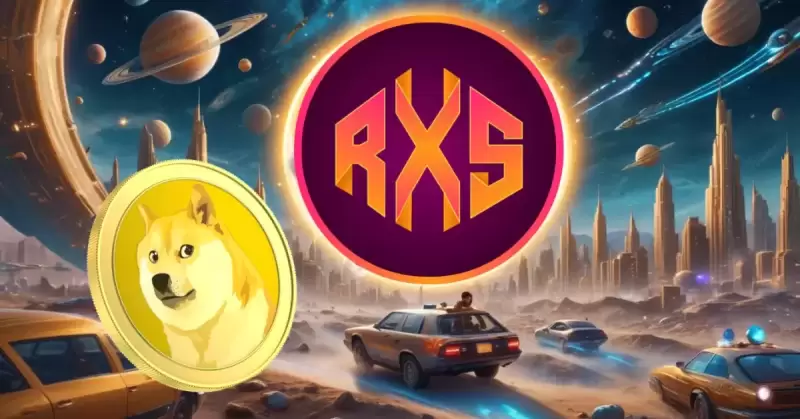 |
|
 |
|
 |
|
 |
|
 |
|
 |
|
 |
|
 |
|
 |
|
 |
|
 |
|
 |
|
 |
|
 |
|
 |
|
Cryptocurrency News Articles
Sui: A Layer 1 Blockchain Attempting to Reimagine Architecture
Feb 07, 2025 at 12:02 am
Sui is attempting to reimagine the blockchain architecture with an object-based model that shifts away from the conventional account-based transaction design.

Sui (pronounced “swee”) is a Layer 1 blockchain that boasts high transaction throughput and the ability to handle demanding applications without encountering the usual bottlenecks. Developed by Mysten Labs, Sui is designed to push the boundaries of blockchain technology with its innovative architecture and use of the Move programming language. The goal is not just to achieve theoretical scalability but to demonstrate that blockchain performance can keep pace with real-world demand.
The team behind Mysten Labs is composed of ex-engineers from Meta’s now-defunct Diem blockchain initiative. CTO Sam Blackshear created Move, while CEO Evan Cheng led engineering teams at Meta and Apple. CPO Adeniyi Abiodun worked on Novi, Meta’s crypto wallet. This background gives Sui an institutional pedigree, but it also places pressure on the project to prove that it is more than just another overhyped corporate-backed experiment.
Sui has attracted serious investment, with $336 million raised from firms like Andreessen Horowitz (a16z), FTX Ventures, Jump Crypto, Binance Labs, and Coinbase Ventures. This puts Sui in the same funding league as Ethereum and Solana in their early days, with backers betting on Sui’s infrastructure to support high-frequency financial and gaming applications.
Launched in May 2023, Sui quickly built momentum, with over $1 billion in total value locked (TVL) by 2024. With zero reported network outages and an architecture designed for high-speed execution, Sui is positioning itself as a competitor to Solana.
But the real question is whether Sui can sustain adoption beyond the initial surge of speculation. Competition is fierce. Solana dominates the high-performance Layer 1 category, and Aptos—another blockchain built by ex-Meta engineers using Move—offers a similar pitch.
Whether Sui can differentiate itself over the long term will depend on developer traction, security resilience, and actual user adoption rather than just hype cycles.
Let’s explore how Sui works and what the $SUI token is used for.
Sui’s Technical Architecture & Innovation
Sui’s defining feature is its parallel execution model, which aims to eliminate the congestion that plagues blockchains operating sequentially. Instead of processing transactions in a linear block structure, Sui’s object-centric approach allows independent transactions to finalize simultaneously. This sounds great in theory, but in practice, efficiency boils down to real-world developer implementation and network conditions.
The blockchain runs on a Delegated Proof-of-Stake (DPoS) system, incorporating a Directed Acyclic Graph (DAG) to streamline data flow. Validators—who confirm transactions—are selected based on staked SUI tokens. This boosts throughput while maintaining decentralization, though like all DPoS models, there’s an ever-present risk of validator centralization if staking power concentrates in a few hands.
Another advantage of Sui is its use of the Move programming language. Originally built for Meta’s Diem, Move is designed to reduce security risks in smart contracts. Its resource-oriented approach prevents asset duplication or unintended loss—critical for financial transactions and NFTs—making it a potential upgrade over Solidity.
However, Move’s adoption still trails far behind Ethereum’s Solidity, meaning developer migration isn’t guaranteed.
Another key component of Sui’s architecture is the Narwhal and Bullshark consensus mechanism. Narwhal acts as a mempool, ensuring smooth transaction batching, while Bullshark handles sequencing within the DAG. This setup theoretically enables 125,000 transactions per second (TPS) under ideal conditions—but “ideal” and “real-world” are two very different things. Until Sui undergoes stress tests at scale, these numbers remain optimistic.
Beyond speed, Sui addresses data storage costs, a growing problem for blockchain validators. The Storage Fund introduces an upfront payment model where users cover the cost of storing their transactions. This reduces the long-term validator burden, but it’s still unclear if the economics will hold up as transaction volume scales.
$SUI’s Tokenomics
Sui’s native token, $SUI, underpins the network. With a fixed supply of 10 billion tokens, distribution is structured to prevent inflation spikes while sustaining long-term liquidity. As of early 2025, around 3.1 billion tokens were in circulation, with more unlocking gradually through 2030.
This staged release model prevents sudden price crashes, but investor behavior around major unlocks is notoriously unpredictable.
The token’s primary functions include:
- Governance: $SUI holders can participate in on-chain governance to influence protocol decisions, such as parameter adjustments and upgrades.
- Staking: Users can stake their $SUI tokens with validators to contribute to the network’s security and earn rewards in proportion to their stake.
- Transaction Fees: Every transaction on the Sui network incurs a fee, which is paid in $SUI and used to compensate validators for their efforts.
- Accessing DApps: DApps
Disclaimer:info@kdj.com
The information provided is not trading advice. kdj.com does not assume any responsibility for any investments made based on the information provided in this article. Cryptocurrencies are highly volatile and it is highly recommended that you invest with caution after thorough research!
If you believe that the content used on this website infringes your copyright, please contact us immediately (info@kdj.com) and we will delete it promptly.
-

-

-

-

-

-

-

- What are gold-backed stablecoins, and how do they work?
- Apr 21, 2025 at 10:40 pm
- Gold-backed stablecoins are digital currencies pegged to physical gold reserves and designed to maintain a stable value. The concept of gold-backed digital currencies dates back to the early days of cryptocurrency, with developers aiming to create a reliable store of value.
-

-




























































